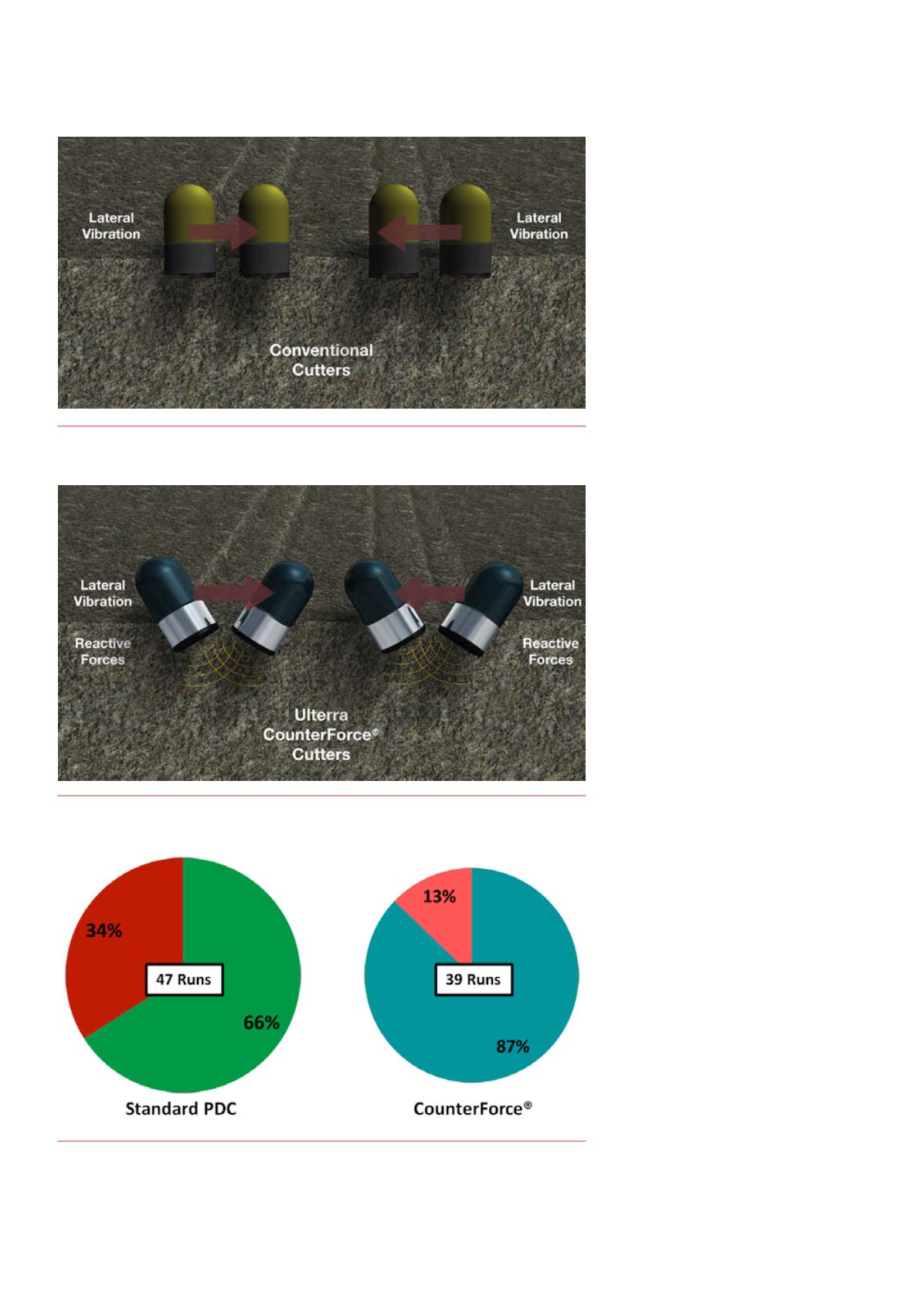
28 |
Oilfield Technology
June
2016
a significant investment of engineering resources and capital.
And once created, such a bespoke asset should not be blindly
force fit into an improper application to the detriment of
another operator. The only long-term path over such hurdles
for service companies is to jointly commit to focus first on
performance for the customer.
Reducingvibrations, reducingtool
failures
Reducing vibration is particularly important
in wells that utilise RSS, which are
becoming more popular as well planners
are pushing the limits on directional
difficulty and lateral lengths. Most RSS
tools are highly susceptible to failure due to
vibration, which is one of the most common
reasons the BHA must be tripped. RSS
directional hands will often monitor these
vibrations and are forced to reduce drilling
parameters, and sometimes stop drilling
altogether to pick up off bottom when
vibrations get too high. Vibrations in a way
act as an ROP ceiling, limiting the driller to
lower parameters than what is necessary for
maximum ROP.
Ulterra’s CounterForce® technology uses
the cutting structure to reduce vibrations
at the bit, which increases efficiency and
reduces bit damage. With the ability of
the cutting structure to reduce vibrations,
operators can not only reduce the number of
trips for tool failures, but can also effectively
elevate the ROP ceiling so that they can drill
faster and still avoid high vibrations.
The claim that CounterForce can reduce
vibrations, and therefore increase ROP
and reduce the number of trips has been
validated through numerous field runs.
A major operator in South Texas utilises
the Weatherford Revolution RSS to drill
out from under surface through the curve
and lateral to TD in one trip. Comparing
the U516M verses alternative bits in this
application in the years 2014 and 2015, the
U516M on average drilled 7% faster. More
importantly, RSS runs with standard PDC
bits of any manufacturer were nearly three
times as likely to be pulled for tool failure
(Figure 3). The U516M completed 39 runs
within this time frame.
The technology’s performance has also
been validated through electronic drilling
recorder (EDR) analysis. A four well pad in
South Texas, again utilising the Weatherford
Revolution RSS, ran the U516M on three
wells, and a competitor bit on the fourth.
The stick-slip magnitude, measured in a
rotational value of c/min, was 35% lower
for the average of the three CounterForce
runs compared to the offset. In addition,
the average ROP for the three CounterForce
runs was 27% faster than the offset, saving
the operator 13 hours on each well the
U516M was in the hole.
Figure 1.
Traditional PDC cutting structures are laid out to be balanced, or neutral to drilling
vibrations.
Figure 2.
The cutting structures are engineered to take anactive role indamping harmful drilling
vibrations.
Figure 3.
The percentage of RSS runs pulled for downhole tool failure. Rotary Steerable tool
reliability has positively correlatedwith the use of CounterForce bit technology over a statistically
significant data set.


